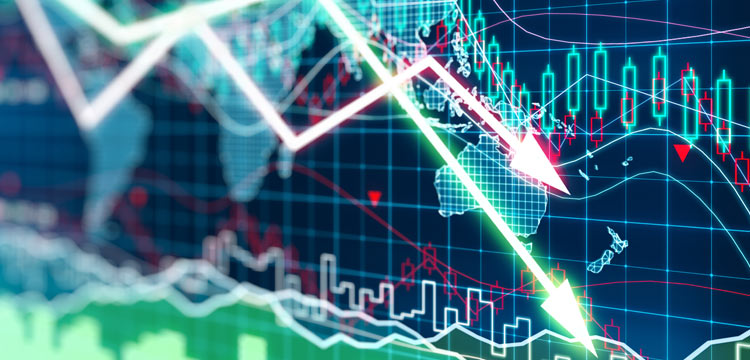Global shares rise
February 17, 2018 | Expert Insights

On February 16th, 2018, world shares including stock markets in Asia witnessed their best gains in nearly six years. The rise in global shares comes after markets witnessed a steep decline for a period of two weeks.
Background
In 2018, the Dow Jones reached an all-time high of 26,000. However, soon afterward, the stock market began to decline. In February, it witnessed its steepest fall in six years. The decline was mainly due to large US tech companies like Google, Exxon Mobil, Apple and Chevron reporting weak earnings. The immediate global markets around the world experienced a sharp decline, thus sparking a worldwide sell-off. Stock markets around the world suffered steep falls and nearly $4 trillion had been lost within days.
Asian markets fell sharply right after the Wall Street decline. Losses were led by the Chinese markets that plunged 5.5% on February 9, 2018. Tokyo's Nikkei 225 was off 3.2% at 21,180.28, and Hong Kong's Hang Seng fell 4.2% to 29,142.87. Australia, South Korea and Southeast Asia also witnessed steep losses.
Chris Weston, chief market strategist at the online trader IG in Melbourne, said volatility was the main problem. “You could wake up and the Dow is down another 1,000 points, or it could be up,” Weston said. “There’s no certainty. Markets like certainty but the only certainty at the minute is of a big move and that could be up or down.”
A period when there is an increase is referred to as the ‘bull’ market and when there is decline, it is called a ‘bear’ market. Since 2009, Dow has been experiencing a bull market.
Analysis
After nearly two weeks of being in the red, world shares including stock markets in Asia witnessed their best gains in nearly six years on February 16, 2018. In doing so, markets largely shrugged a rise in global borrowing costs. The value of the US dollar steeply declined to its lowest level since 2014.
According to the MSCI world index of stocks, which tracks shares in 47 countries, it was up by 0.4 percent after European bourses opened. Japan’s Nikkei rose 1.2 percent. This was largely due to investor relief as Haruhiko Kuroda has been nominated for a second term as the Governor of Bank of Japan.
Michael Hewson, Chief Markets Analyst at CMC Markets spoke about the global rise in borrowing costs noting, “"For me it's really a question of maybe. Markets are taking a look at the inflationary outlook and saying OK, maybe rates are going up and maybe the economy will compensate for that," said Michael Hewson, chief markets analyst at CMC Markets. "That might change if we move to 3 percent on the 10-year (Treasury).”
The US dollar meanwhile has slumped to its lowest levels since 2014. The drop in dollar value is partly due to concerns that Washington is pursuing a weak dollar strategy. Traders are also worried about whether United States' twin budget and current account deficits will affect the dollar.
Yoshinori Shigemi, global market strategist at JPMorgan Asset Management said US President Donald Trump’s protectionist policies could affect the markets further. "His protectionist policies could also fan inflation. Markets appear to have calmed down for now but fundamentally it is different from last year," he said. "You could say that right now, rather than stocks rising around the world, it is the dollar falling against almost everything," he added.
As the dollar weakened, the price of oil rose and U.S crude futures traded at $61.74 per barrel. They were up by 4.1 percent so far this week. Even the value of Bitcoins went up. After witnessing a significant slump, Bitcoins were trading at over $10,000.
Assessment
Our assessment is that a bear market would prove to be disastrous to the current global economy which is finally on track for recovery. The market still is highly volatile, and this should be a cause of concern to investors and lawmakers. It could take up to 22 months for the global economy to recover if a bear market commences.








Comments